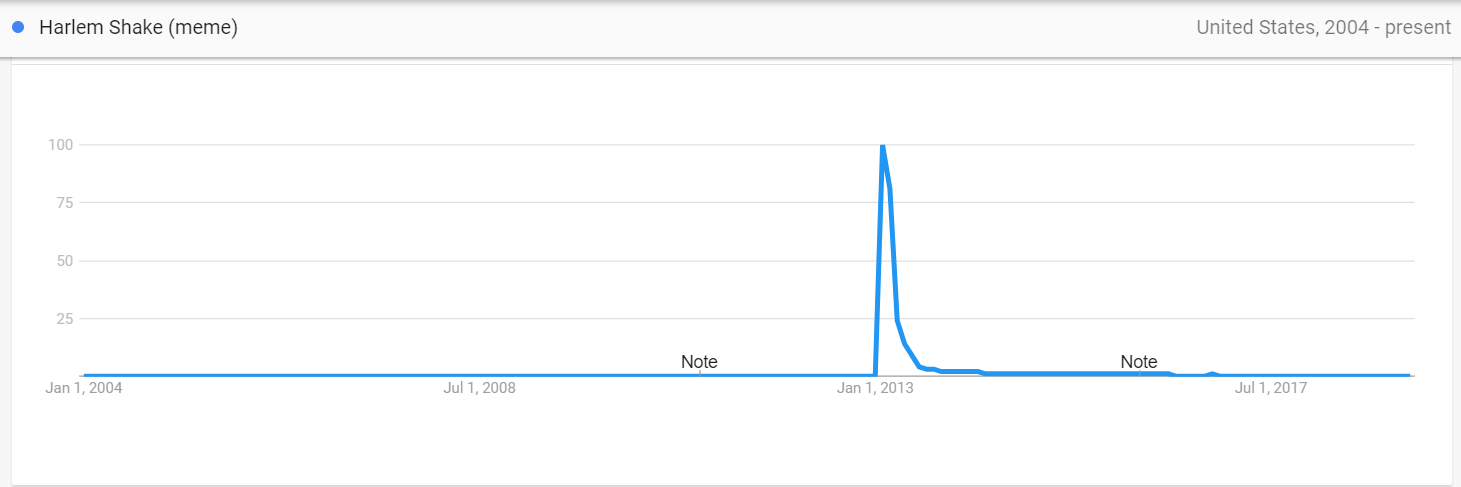How to select and master the right content distribution channels to get in front of your key audience
Many business leaders have gotten the memo that content can expand their business, but have not yet implemented a content distribution strategy for their content. Well-written content can take hours to write, but if it’s not posted online and put in places where your audience is going to find it, all that time spent writing has no payoff. If you do not have a plan to share that content with the world, you are losing potential value when you could be gaining traction with your customers.
Fortunately, content distribution is easy enough if you know how to do it. In this guide, we explore how to distribute your business content by exploring categories of content distribution channels. Not all of these channels are necessary for every business, but leveraging the right channels for your business can gain momentum for your content and make an impact in your market.
Understanding content distribution will make it easier to assign directives to others to distribute content, too. In turn, getting a good grip on how distribution happens will make it easier to hire the right PR firm, community engagement group, social media agency, or any other vendor who focuses on fulfilling part of your content distribution strategy, making your bidding processes simpler, more efficient, and easier on your budget.
This guide will examine the tactics and benefits of six types of business content distribution channels:
- Press relations
- Guest appearances
- Community outreach
- Search engine marketing
- Owned content
- Direct sales
These channels offer you a wide variety of options for your business content distribution strategy and are often best used in concert with one another.
As you read about each type of channel, it may help to pause and visualize how these channels can be applied to your business.
What are some ideas you can implement immediately to achieve instant upgrades?
Do you have the budget and personnel to make it happen?
Who can you talk to?
What are your alternatives?
If you ask yourself those questions and truly assess the ideas we have gathered, we promise that by the end of the exercise you will find several easy opportunities to increase how many people see and engage with your brand.
Let’s begin.
Channel Type 1: Press Relations
Press relations, AKA public relations (PR), is about talking to journalists and finding ways to earn media for what you do. Positioning yourself with the media opens opportunities for you to get in front of larger audiences, creating a stir for your business or organization.
PR isn’t cliodynamics. It’s a function any business can use to amplify its message.
Press Relations Benefits
- Increases brand visibility
- Builds brand authority
- Stronger relationships
- Backlinks
Press Relations Tactics
Press Relations Tactic 1: Send out press release or press announcement
Press releases are a timeless tool, especially in the world of B2B business. Press releases have a simple format that is easy to mimic and use to generate buzz about your company.
The idea behind a press release is to send the journalist a version of the story that you wish they would write, but still sounds reasonable and realistic. Journalists will often quote press releases directly if the information is presented in a professional manner.
Reasons to Write a Press Release
- New product
- New hire
- New company
- New funding
- Big conference
- Performance milestone
- Awards
- Partnerships
- Mergers and Acquisitions
Press Release: Morgan McAllister Joins RedShift Writers as Senior Content Writer
Press Release: Senior Content Writer Morgan Acree Joins RedShift Writers
Press Relations Tactic 2: Send out press kit
A little more extensive than a press release, a press kit includes several pieces of collateral to tell journalists about your company or recent company news. Press kits are versatile and can be used for a wide variety of purposes.
A press kit usually includes:
- Press release
- Company bio
- Headshots and leadership bios
- Product sample(s)
- Any other relevant information, such as an event invite or upcoming calendar schedule of events
Press Relations Tactic 3: Reach out with tips or expert insights
Just as journalists may print parts of a press release verbatim because they need content fast in order to do their jobs, they may also take quotes verbatim from experts in the field regarding a story that they are writing. When you create a piece designed to drive thought leadership for your company, make sure to send it to journalists with a note letting them know you are available for interviews and would be happy to lend insights or answer questions. In turn, you may end up in their stories as a voice of authority.
Press Relations Tactic 4: Hold a press conference
Need to share information that is highly newsworthy to multiple outlets at once? Plan a press conference. You can hold press conferences in person or virtually depending on your needs, the reporters you are trying to reach, the weather, etc.
Press Relations Tactic 5: Host an event
Whereas a press conference is simply the speakers and the press, an event takes a lot more work. But if you do it right, the event itself can become a story and draw the attention of journalists.
Types of Public Relations Events
- Grand openings
- Parties for customers and other stakeholders
- Live product tests
- Product launches
- Book releases
- Conferences
- Workshops
- Panels
- Speaking events
- Publicity stunts
- Galas
Press Relations Tactic 6: Conduct a research study
Journalists love data points. It helps them keep things factual. When you send them sound research that has been tested via survey, it takes some of the work off their plates. If you have enough time, try launching a survey and sending the results out in a case study or white paper angled toward your business needs.
Press Relations Tips
Press Relations Tip 1: It takes time
Do not expect that you will send out a press release and journalists will swoon. You have to build relationships with journalists before they pay attention, and it will take time to calibrate your news pitch so you can learn what they are looking for from sources like you. Keep a journalist database that includes all journalists for your particular beat. If you want to get fancy, you can use a PR database to blast press releases to a bunch of lists of influencers all at once.
List of PR Distribution Databases
Cision from PR Newswire
Businesswire
Prowly
GlobeNewswire
PR Buzz
If you cannot afford a fancy system like one of these, you can also just email journalists directly and follow up with a phone call. If you send the same email to a lot of journalists, use the BCC function on your email or you will send a spammy-looking email that ticks people off.
Press Relations Tip 2: Not everything is news
I once knew a window company who wanted to be in the New York Times. Why? Because they read the New York Times, and they wanted to be somewhere with a lot of attention.
The problem is that nothing about them warranted a story in the New York Times. The effort it would have taken to pull off such a miracle would not have been worth the cost. It would have been cheaper to take out a full page ad. The New York Times covers some of the nation’s most pressing stories. Its readership just isn’t that interested in glass windows.
Not everything is news, and sometimes you have to accept that your company is not as newsworthy as you think it is, or at least not yet. Good PR firms have to explain this to their clients all the time.
If you want to be newsworthy, get creative. Find an angle and pitch journalists that are relevant to your beat and your story. Start small, build press, and use your momentum to grow your presence in the media over time.
Press Relations Tip 3: Measurement is tricky
I received my masters degree in the field of public relations. Throughout my program, measurement was a hot topic because the impact of PR is difficult to quantify. How do you measure public opinion? How do you assess sentiment? Is it about how many stories you land? How many column inches you take up in the paper?
What about how positively your brand is presented in the media? How do you measure that?
There are all kinds of fancy tools to measure sentiment, but there is no magic bullet to measuring public relations. The key is to come up with a goal before you launch your PR efforts so you can measure using the same key performance indicators at the beginning and end of the campaign. You will likely find that your PR performance is tied to other parts of your company such as marketing, especially in the age of digital public relations, where site traffic and other web analytics are used to measure the reach of a news story.
Press Relations Tip 4: Be strategic
Remember, not everything is news. However, what is news to you may not be news to me. If you are launching a new little library program in your small town, the small town paper may find that newsworthy even if CNBC does not. Your new product offering may not break into the business section at the Chicago Tribune, but a credible business blogger may still write about it. Be strategic in listing out the parties that are most relevant to your business and most likely to run a story about you, and you can save yourself time and effort.
Also consider using press relations tactics in coordination with a larger public relations campaign. For example, you may want to plan an event, then send out a press kit with a press release to promote the event. You can even hold multiple events or a press conference followed by a product launch to build a narrative with continuous buzz.
The more methodical you are in your public relations efforts, the more successful you will be.
Channel Type 2: Make Guest Appearances
When you are invited to be a guest on podcasts, shows, or in the editorial pages of publications, it can build credibility for your business. It puts your ideas in front of a mass audience.
While being a guest in the media is an extension of press relations and can be used as a complement to previously mentioned press relations tactics, guest appearance outreach is unique enough to warrant its own focal point.
Guest Appearance Benefits
- Builds credibility/authority
- Spotlights ideas
- Strengthens and expands relationships
- Builds awareness
Guest Appearance Tactics
Guest Appearance Tactic 1: Write a guest post or editorial
Are you a good writer? Or do you have a good content writer on staff or available as a vendor? A guest post or editorial may be the way to go.
Many news outlets and blogs accept guest posts or editorials because they need content to fill their pages. Your target audience is likely tuning in to many of those outlets; if you are already researching outlets for PR opportunities, you will likely come across guest post and editorial opportunities along the way.
Make sure to only submit to relevant media, and to come up with a great angle for the beat. Otherwise your post will not get placed and your efforts may be wasted.
How to find guest post opportunities
- Search Google
Type “submit a guest post” into Google and see what comes up. There are a ton of lists out there put together by content marketers about the “100 best places to guest post” by year, niche, etc. It’s easy to find if you Google around a little.
- Connect with bloggers and editorial boards
Network, like you would with journalists.
- Join chambers and organizations
Most business chambers have access to places where you can submit short blurbs about your company.
- Trade space with partners and clients
Like the business chambers you are a member of, your clients and partners want you to succeed. Many will give you space for free.
- Check in with your alma mater
Your alumni association probably has a newsletter. The school newspaper would probably run a story, too.
Guest Appearance Tactic 2: Appear on podcasts and streaming shows
It seems like everyone has a podcast. Podcasts need guests because the podcast business model, like that of news outlets, demands a regular churn of new content.
Find podcasts and streaming shows that are relevant to your beat and your business, then reach out. They may be happy to host you.
How to find podcast guest opportunities
- Search Google
Use a search strategy similar to the one we used to find guest post opportunities.
- Scan YouTube, then Twitch
There are a lot of streamers out there. See if any of their shows align with what you do.
- Check Twitter
Twitter is an interesting place to look for podcasts because it shows you what is trending. Podcasts are made for trend marketing.
Guest Appearance Tactic 3: Do some public speaking (solo or panels)
Public speaking organizations now carry clout. Ted Talks, Ignite Talks, Spark Talks and other innovations in oratory have led to widespread speaking events with market focus and professional, global branding.
Public speaking does not have to take place in front of a large audience in order to benefit the speaker and their business. It is easy now to gather pictures and videos of people talking to an audience, both digitally and in person.
The content of our speeches shapes our dialogue. It can move minds.
How to find public speaking opportunities
-
Search Google
Again, repeat what we did in the guest post opportunities section.
-
Talk to schools
Connect with schools you attended; schools you have donated to; programs at universities in your city that in any way connect to your business; and student organizations that are relevant to your company.
-
Talk to professional organizations
These groups are often looking for guest speakers to pitch their business. For example, Business Networking International (BNI) groups exist across the United States and are always seeking new guests.
Guest Appearance Tips
Guest Appearance Tip 1: Do your research
No matter what you are pitching, you need to pitch the right people the right way with the right information, just like you would with journalists. Sites that take guest posts usually require that you meet certain editorial guidelines. Positioning to be a podcast guest means understanding the podcasters and their audiences. Organizations accepting submissions from public speakers have similar processes to follow. Comply with what is needed to land these opportunities.
Guest Appearance Tip 2: Write strong content
If you are guest posting, turn in a great piece. You can update content on your own site, but you do not usually have that luxury with a piece on another site. Make sure your content is powerful.
Guest Appearance Tip 3: Practice your speech or presentation
Public speaking is difficult, even if you are naturally good at it. If you want your speech to land, you need to put in work before you step on stage.
Guest Appearance Tip 4: Prep for all interviews
Like speeches, interviews require prep, although it is prep of a different kind. Interviews range greatly in nature, so how you prepare will, too. If you do not know a lot about handling interviews, please find someone who does.
Guest Appearance Tip 5: Do as much advanced work as possible
There are two reasons you want to be prepared before going on the road. First, if you are doing a five-city tour, you do not want to have to write social media posts and press releases, or film a bunch of videos or record audio while you are trying to prepare for your speech. The bigger the opportunity the more true that rings; no one wants to write a 500 word post after a long ride from the airport to the hotel.
The second reason you should prepare content in advance is that you can optimize performance by making sure it goes out at the right time, and preferably as soon as possible. The longer content is out there, the more chance it has to pick up traction and traffic. Put a longer tail on the impact of your guest appearance efforts by doing that work in advance.
Or better yet…
Guest Appearance Tip 6: Hire creative professionals to help
All tasks involving pitching people can be sourced one way or another. So can all the writing, design, development, etc. There are vendors, free lancers, and employees who can pick up different parts, make a good living, and thrive. Don’t do it all yourself. Find the right help.
Channel Type 3: Community Outreach
Akin to press relations, community outreach involves finding all of the community groups that communicate with your company. Community outreach tends to look beyond corporate media relationships to the grassroots connections you can make for your business, no matter your size or focus.
Community Outreach Benefits
- Softer sale
- Authentic connections
- Shows values
- Qualifies leads
- Brings people together
Community Outreach Tactics
Community Outreach Tactic 1: Pursue social good
What causes do you care about? How do you want to make a difference? Where do you donate charitable funds?
Social good spaces are where you can meet a lot of people whose values align with your own because these spaces are actually built around those efforts.
There are a million social good spaces out there, so searching for a space can become a time-consuming process. Fortunately, social good organizations tend to communicate clearly about what their mission is, so it should be easy for you to quickly tell whether or not their efforts align with yours. Research different programs and applications for things you care about and send them content.
Social good opportunities also carry direct business advantages: they clarify what you stand for, build goodwill, and save you money on taxes. If you launch your own social good project, remember to send out a press release about it. You may as well tell the world and inspire others to do something good, too.
Community Outreach Tactic 2: Join trade and professional groups
Every profession brings a different mix of people. If you work in construction, you probably know roofers, plumbers, window and cabinet companies, architects, designers, lawyers, and many other people who are in and around the construction process. Since we are a writing company, we tend to network a lot with marketers such as web developers, graphic designers, PR teams, social media strategists, and other roles in the marketing profession.
You are probably already thinking about the spaces that are relevant to your own industry. Go network in those spaces. They offer a lot of room for business growth.
List of Professional Group Examples
- Practitioner (Role) Groups
- Industry (Vertical) Groups
- Local (Geography) Groups
- Age (Generational) Groups
- Identity (Culture) Groups
There are plenty of other ways to sort and find groups to network with. Remember: in addition to joining groups that are directly relevant to your industry, also find groups frequented by your prospects. If a client has been ideal for you, network in their industry space. For example, if you are a cleaning company who has found success with medium-sized businesses in tall buildings, attend events that those companies go to. You can find a lot of information about a company just by Googling them.
Those who you compete with may still trade leads with you, or even want to partner up on something fun and prosperous, so be sure to be among others in your industry sometimes, too.
You likely already know who many of those folks are.
Once you find the groups you want to engage with, check out all the ways you can get in touch with them.
Possible sub-distribution channels within community outreach include:
- Online forums- Usually on social media.
- Luncheons- Rubber chicken and conversation.
- Galas- Fancy shmancy suit and tie stuff.
- Educational Events- Workshops, speeches, and presentations.
- General Networking- Coffee, bar nights, bowling, whatever.
Your industry also likely has a ton of certifications and awards. Consider applying for both.
If you’re a B2B business, you will probably also see a ton of opportunities for your clients to connect with their customers. Let them know about those as a matter of service, and build ways for them to make it happen. (Customer experience hacking makes life better for everybody. Boom!)
Community Outreach Tactic 3: Join business chambers
Business chambers are easy to find. They operate much in the same way as professional and trade groups, and you can find them the same way. Structurally, they offer similar opportunities, but are composed only of business owners. These groups have a lot of decision makers in them.
Community Outreach Tactic 4: Seek out opportunities from government bodies
Government groups are also fairly easy to find, and there are a ton of them out there. If they are important to your business or could add a prosperous dynamic to what you do, check them out. To get started, search for Small Business Administration opportunities in your area. You can also search for economic development councils, especially ones that are related to local public universities or municipalities.
When we think of the government, a lot of people think about elected officials. The government definitely is inclusive of those folks and their staff, but it is much, much more. There are departments at the local, state, and federal level all putting out projects and vying for budgets and attention. There is a market there.
You can also find quasi-governmental bodies, such as public commissions, public-private partnerships, or public honors for private entities. Maybe you can get a client an award at City Hall.
Community Outreach Tactic 5: Attend art and culture events
Museums, galleries, and recreational establishments all hold different events with paintings, DJs, discussion groups, movie screenings, concerts, tastings, and plenty more. A few are bound to overlap with your interests and purpose. Go connect. Have fun!
Not sure where to start? Ask yourself: what is the largest cultural event in your area? The Houston Livestock Show and Rodeo is the largest annual event in mine. It has a ton of committees and individual tents where people need assistance for the day. You can network there just by getting involved in the organization.
Community Outreach Tactic 6: Go for the goal at sports and recreation events
A lot of wealthy people love sports, and not just the most popular sports. In most large American cities, football, baseball, basketball, and perhaps hockey are the biggest sports. However, squash is a well known game in many parts of the world, and is a favorite of people who are wealthy enough to have memberships to very nice squash courts. If you network with the squash crowd, you can sell them your service, or you can sell a service specifically around squash. Either is an opportunity made real by those willing to network in squash circles.
Community Outreach Tactic 7: Support schools
Kids deserve to learn in a good environment, so schools can use all the help they can get. There are opportunities at all levels of education to get involved.
You can:
- Talk to classes
- Join PTOs
- Volunteer
- Support a good policy
- Launch a scholarship
There are certainly good business opportunities here, but make sure they follow true goodwill if you are going to go in that direction. Schools are a good place to engage and be helpful as you network.
Community Outreach Tips
Community Outreach Tip 1: Make a non-mutually exclusive list of all stakeholder audiences
Write down literally all possible stakeholders for your company. Every kind of consumer, influencer, community member, media outlet, regulator, partner, etc. Start with categories; you do not have to be specific.
Once you have all of your audience categories listed, you can use the list to further guide research into those audiences. You may already have a list of names in a company CRM. You can also easily hire people who will build large lists that can help you take shortcuts as long as you give those vendors strong direction on what information is to be gathered.
Community Outreach Tip 2: Focus your efforts
Unless being in a ton of different communities is essential to your brand, as might be the case with a PR firm, be judicious about community outreach. You do not need to be in every area. Find the ones that make sense for you and focus on those.
For example, if you want to position your business to win government contracts, you probably need to get good at responding to Requests for Proposals (RFPs), and get to know the people who draw those up so you know the best way to respond to them. Public meetings to discuss those bids are eye-opening if you have never attended them.
Bush Intercontinental Airport in Houston, Texas is currently undergoing a $1.5 billion airport makeover that started in 2014. That money was bid out to the public by the City of Houston, who owns the airport. When a bunch of people show up to a meeting about how to bid on more than a billion dollars in drywall, carpet, ceilings, floors, fabrication, transportation, catering, and whatever else is needed to complete that bid, that’s an opportunity for many businesses to find clients.
Where do you need to go to find those clients fast so you don’t scour the whole world in search of something undefined?
Community Outreach Tip 3: Connect people when possible
People love to be connected to other people in a mutually beneficial way. Think of other people and connect them with a well-worded email or text about how great they both are and how you thought they might work well together. The people you connect will benefit from their relationship with one another, and both parties will remember you as a connector who is worth keeping in their network. Not only do you get good business karma, but they will also be likely to return the favor down the road.
Community Outreach Tip 4: Let genuine interest guide you
Something about the communities you engage in must ring true to you. Otherwise, hire someone else to do your community outreach work. It is okay if a group is not for you, but then you are not the one meant to network there.
Channel Type 4: Search Engine Marketing (SEM)
Search Engine Marketing (SEM) involves making your company easy to find on search engines. It includes both Search Engine Optimization (SEO), which is called “organic search,” and Pay Per Click (PPC), which is called “paid search.”
The goal of SEO is showing up on search engine results pages (SERPs) or in tables and snippets at the top of SERPs, then driving traffic to your website. The goal of PPC is to drive leads by getting people to click the paid ads that show up at the very top of search results.
Search Engine Marketing Benefits
- Softer sale
- Big reach
- Measurable
- Flexible
- Fixable
SEM Tactics
SEM Tactic 1: Research keywords and write targeted content
Creating and distributing well-conceived, well-executed content through the right distribution channels is going to feed into SEO. In other words, posting content is going to generate traffic to your website.
Part of making your content powerful is optimizing it. To optimize your content, start with keyword research tools to find keywords that are commonly searched by your audience.
There are a ton of SEO research tools that evaluate keywords, including:
The basic idea behind keyword research is to find the ideas that people are searching for online (keywords), then create content that shows up when they search for those ideas. It is best to target keywords that are:
- Relevant to your business
- Easy to rank for
- Aligned with the search intent of your prospect
Once you find those keywords, you can design a whole content strategy around them and leverage search engines for content distribution. Make sure to include the keywords in the headline and first paragraph, and to sprinkle them naturally throughout the article.
SEM Tactic 2: Optimize on-page content
Even if your articles are angled toward search engines, you must still optimize the SEO-specific fields on your site associated with each page or post in order to achieve true search engine optimization.
These fields include:
- Title Tags
- Meta Descriptions
- Custom URLs
- Alt Text on Images
- Headings
If you update your own website, you probably have a plug-in that tells you how to fill these out. If someone else updates your site, check in with them to see how to update each of these sections so you can include keywords for each.
SEM Tactic 3: Build backlinks
A link from another site to your site is called a backlink. Backlinks show Google that you are a legitimate site. The more backlinks you have from sites that are recognized by Google’s search engines, the more likely your site will rise in search rankings.
Common Backlink Tactics
- Press Relations
- Guest Posts
- Guest Appearances
- Community Outreach
- Signing Up for Directories and Other Listings
- Creating Content People Want to Link to
- Social Media
SEM Tactic 4: Enhance your technical SEO
Technical SEO is not so much a central part of your content distribution strategy as it is a prerequisite for Google to like your website. If your site has a lot of broken links, loads slowly, or is difficult to navigate because the link structure does not make much sense, then Google won’t like it.
A good web developer and a content strategist can make your site much technically cleaner.
SEM Tactic 5: Invest in pay per click (PPC)
Pay per click (PPC) is the paid advertising side of SEM. Google’s pay per click program is called Google AdWords. It allows you to create ads based on certain keywords, similar to how you practice SEO. The difference is that when you pay for PPC, you show up in the advertisements above the organic search results. When users click these ads, you are charged a certain amount for each click (get it? Pay *per* click).
Pay per click campaigns, like other ad campaigns, depend on targeting the right customers (through search intent) and writing a sharp headline and description text to compel them to click. Google AdWords fortunately offers lots of guidance for how to maximize your ads throughout the process.
Search Engine Marketing Tips
SEM Tip 1: Follow Google’s rules
Google is the world’s largest search engine. It is most likely that the majority of your prospects are using Google as opposed to other search engines. Some smaller search engines also tether themselves to Google’s philosophies and approach, so following suit with Google will set you up for general success.
It cannot hurt to check out other search engine performance too, so take a look at sites like Bing and Yahoo at some point to see if they are worth your time to optimize for. But start with Google. If your site ranks well on Google, chances are it will rank well on Bing and Yahoo, too.
SEM Tip 2: Keep building content
Activity begets more activity. Keep writing and designing content in various forms. Write, design, make videos and presentations, and do anything else you can to build up your site content and provide value to your audience. Search engines will reward you for it.
SEM Tip 3: Test, check, adjust
Google does not entirely share how its search engines work, so you need to observe your content and site performance over time. Keep an eye on your web traffic and performance through Google Analytics, SEMRush, or HubSpot and then adapt to overall trends.
One way Google does help out is by telling you when a big update is coming, so even if you do not know exactly how it works, you can still measure changes that come with general search engine updates. Even better, see what SEO specialists are saying about Google updates whenever they happen so you can shortcut some of the dirty work of testing the changes yourself.
SEM Tip 4: Source help if needed
SEM takes a lot of time and dedication. A little investment can go a long way. Consider hiring vendors to make the most of your search engine marketing efforts sooner rather than later.
Potential vendors who can upgrade your SEM performance include:
- SEO vendors
- PPC vendors
- Content writing agencies
- Graphic designers
- Web developers
- Videographers
- Photographers
- Social media companies
Channel Type 5: Owned Content
Owned content distribution channels are all the ones under your control, from your website to your office and every other asset. If you have vehicles, you can put a sign on them. Same with a wall that you own.
Owned content can be pushed out through channels you do not own through guest posts and press relations, but it is mainly designed for content that goes directly on your website, brochures, phone scripts, and other major collateral. It may also be pushed out through spaces that are quasi-owned. For example, you control most aspects of your social media pages, even if you do not control the websites that host them. Therefore, these pages are under your control but not technically yours. Nevertheless, they are a big opportunity to connect with your audience.
Owned Content Benefits
- Ownership of ideas
- Direct attention and SEO traffic
- Builds value in the company
- Certainty in distribution
Owned Content Tactics
Owned Content Tactic 1: Update your website
Since your website is basically your digital storefront, you should always leverage it for authority and performance. When people land on your site, you want them to understand your service and start looking to buy.
Just like a physical location, the changes you can make to your website are limited only by your imagination. Unlike a physical location though, they are far less limited by your budget.
When looking at ways to update your website with fresh content and a new look, there are several broad categories of subtactics worth exploring.
Website Update Tactics
Add Pages
Adding new pages to your site will expand your sitemap, increasing the likelihood that pages will be indexed by Google, linked to by other websites, or browsed by website visitors.
Possible new web content for your website includes:
- New service pages
- Blog posts
- Press releases
- Ebooks
- White papers
- Guides
- Landing pages
Update Pages
If you do not want to add an entirely new page, you can also add content to an existing page, or otherwise change the content on the page.
Possible page updates you can make to your website include:
- Adding or changing the footer of your website
- Adding sections of new web content to an existing page
- Adding new photos, videos, or graphic illustrations
- Editing or enlarging existing paragraphs
- Adding plug-ins and widgets to your page such as graphs, tickers, countdown clocks, and social media feeds
Change Pictures
Altering the images on your site by upgrading them to higher quality or optimizing the alt text can be a fast, easy way to improve the optimization of your site.
Change Template
Changing your website template may require a larger overhaul effort than other tactics, but moving widgets, plug-ins, content, and graphics around can make a big difference in your content performance. Some digital marketing CMOs spend their days testing two versions of the same page (AKA A/B testing), then directing traffic to only those that perform best. Eventually, they are able to optimize the template of the website for the best possible performance. Any company, whether it’s a small business, a medium-size business, or a conglomerate, can take the same approach.
Owned Content Tactic 2: Launch email campaigns
Decades ago, businesses depended on a mailing list and a phone list to reach their customers. Today, email lists have become the new central repository for most customer information.
Email campaigns target prospect lists that you have either tailored or purchased specifically for your needs. Oftentimes, these campaigns are aimed at people who actually opted in to receive more information, making for fertile ground for rich interaction with your intended audience.
Email campaigns are based on sequences of emails tied to user behavior.
Types of Email Campaigns
- Direct sales emails: Make the ask for purchase.
- Educational emails: Inform the customer, providing them some new knowledge that is relevant to their interests.
- Promotional emails: Highlight a specific offer.
- Seasonal emails: Highlight something related to the time of year and your customers’ seasonal interests.
- Drip campaigns: Send out a series of continuous emails designed around a specific objective for your company.
- Reengagement emails: Loop in “cold” customers who have fallen out of touch.
- News emails: Inform customers of something happening now.
Each of these email campaigns can be used in sequence with one another and in varying patterns to maximize results. Some individual emails or email marketing campaigns can fulfill more than one purpose, adding more depth and texture to your efforts.
Tweak your email campaigns the same way you do your website. Try sending out two batches to the same group with only one changed variable. See which version of the email gets better results. Go with what works.
Owned Content Tactic 3: Enhance your social media presence
Social media networks were once a secret weapon. Now, many of the largest social media sites have gone mainstream. But social media is constantly evolving to offer new opportunities to engage your audience, whether its emerging social media networks or new ad services added to older networks.
Social media presents the opportunity for direct engagement with customers, but direct engagement must be used cautiously. For many brands, the time commitment and risk of PR mistakes outweighs the potential benefits of an ongoing discussion with your market. Nevertheless, almost all companies can find a reasonable, positive way to use social media. And in many industries, it is vital to push a consistent social media drip to keep audiences engaged.
Social Media Content Distribution Tactics
- #Hashtag campaigns: Design a campaign and assign a #hashtag to it.
- Live streams: Talk directly to your audience.
- Webinars: Plan a digital event or workshop and gather a crowd.
- Cool art: People love to share imagery. You can always use memes.
25 Social Media Content Distribution Channels
- YouTube
- TikTok
- Tumblr
- Quora
- Snapchat
- Vimeo
- Twitch
- Google Reviews
- Flickr
- Medium
- Discord
- SoundCloud
- Nextdoor
- Meetup
- Clubhouse
- Periscope
- Triller
- Goodreads
- Yelp
- Vimeo
You do not have to be on all of these, and there are tons of other social media channels out there beyond these 25.
Owned Content Tips
Owned Content Tip 1: Plan your calendar
Instead of trying to keep up the pace with day-to-day churn, plan your calendar out in advance so you can develop quality content on a regular basis. Site updates, email campaigns, and social media can quickly grow into an enormous beast within your marketing department. If directed properly, owned content can benefit your business, but it can also be overwhelming to manage.
Keep a clean, easy-to-use content calendar that you can lean on to know what’s next. Hold periodic meetings to discuss what is on deck and to brainstorm so you can stay ahead of the calendar, no matter what content distribution channel you are discussing.
Owned Content Tip 2: Be consistent
Keep producing and testing content. Activity begets interest over time. Stay at it.
If you are unsure where to get started, remember that you do not have to turn everything on at once. Think carefully about your overall content strategy before focusing on distribution instead of diving headfirst into trying to do everything at the same time. Planning will save you a ton of time, headaches, and budget.
Owned Content Tip 3: Ramp up
Start small, then grow. You have to walk before you can run. You have to get a handle on one owned content channel before diving into another.
Owned Content Tip 4: Align and integrate all owned content efforts
Whatever is happening in your email campaigns should complement what is happening on your blog. Your social media should push out blog posts and videos. Your videos should have transcripts and images. Seek alignment in your voice, style, and activities across all channels.
Owned Content tip 5: Lean into your strengths
If you’re good at video, use video. If you prefer to write, write. Leverage your company’s natural talents and hire out the rest of the work.
Owned Content Tip 6: Optimize
Social media channels in particular operate according to specific rules. Similar to search engine marketing’s relationship to Google and other search engines, social media companies require marketers to play into certain algorithmic preferences, usually discovered by posting and testing the performance of your content. Perform tests to figure out what works best.
Owned Content Tip 7: Hire content writers, graphic designers, web developers, and other strategists
Remember to lean on hired talent! You do not need to do everything, and in fact, can’t.
Channel Type 6: Direct Sales
Last but not least are all of your sales channels. To exist, a business needs at least one customer (or client, if you prefer that term). Your sales team knows a lot about your product and your audience. Your marketing team and your sales team must work together for you to maximize the impact of both. If your marketing team develops collateral that is useful to sales, you will see a higher quantity of larger sales close at a more rapid pace.
Direct Sales Content Distribution Benefits
- Warms up leads
- Closes sales
- Cross sells and upsells by introducing new products and ideas
Direct Sales Tactics
Direct Sales Tactic 1: Leverage telemarketing
In spite of severe regulatory restrictions implemented over the past few decades, telemarketing still works. Your phone team is usually one of your most dedicated sets of evangelists from inside your company. Successful telemarketers operate via adaptable scripts and know how to navigate almost any possible conversation with a prospect.
Use telemarketing as a chance to impress any new messages upon the people you’re calling. Just like your service department, your sales team can carry forward important brand messages as they talk to your audiences. Make it part of their script to offer marketing collateral as a followup to their calls. Invite them to events. Get the message through on the phone.
Direct Sales Tactic 2: Make your pitch face-to-face with door-to-door sales
Never underestimate a sales rep who can pitch people one by one. These folks are persistent. They have to be; the failure rate is too high.
Face-to-face sales reps can hand out brochures or promotional items of follow up via digital means. Make sure to leverage their good-old-fashioned content distribution capabilities.
Direct Sales Tactic 3: Attend trade shows
Trade shows and conferences are where many companies build authority. In many industries, there are specific shows that everyone goes to. These shows get plenty of publicity that you can use to your advantage.
Consider preparing well in advance for trade shows so you can maximize all opportunities and prepare your content for distribution. With so much foot traffic, you should be able to get your content out to critical prospects without too much trouble.
Direct Sales Tactic 4: Launch direct mail and email campaigns
With direct sales emails and direct mail campaigns, you can send content directly to a client’s inbox.
Direct Sales Content Distribution Tips
Direct Sales Tip 1: Connect sales to marketing
If your marketers, product leaders, and sales reps are connected, you will eventually see powerful content messaging and distribution arise from their relationships. Make sure they are collaborating.
Everything you produce for marketing can be turned into sales content. If you are writing ebooks for key audiences, those can be broken into tip sheets and all other kinds of material that are direct sales content delivered to the prospect by hand from your sales team. Leverage all of your efforts together. Use the content you develop in one place to be distributed through plenty of other channels.
Let no good content go to waste.
Direct sales tip 2: The sale is the point
While direct sales channels are good content distribution channels, the sale takes priority. A lot of sales discussions are facilitated through conversation as opposed to content.
When it makes more sense to sell than to distribute content, focus on closing the sale.
Jumpstart Your Content Distribution Strategy
A sound content distribution strategy is essential to your business. Content distribution expands your reach, putting your message in front of new audiences and creating room for new opportunities. While you do not need to leverage every channel, taking the time to find the right content distribution channels can pay off for years to come. Smart content distribution strategy multiplies the effect of your content, making better use of your time and resources.
Now that you have an immediate list of the most common channels to explore, you should be able to find the ones you want to leverage and start amplifying.
Need help figuring out where to start?
If you have any followup questions, contact RedShift Writers for a conversation. Our experience in content strategy spans both content production and content distribution. RedShift Writers has deep experience in writing and distribution in both the public and private sector. Whether you are exploring content strategy for social media channels, news outlets, newsletters, ads, or any other medium, drop us a line at 832-489-7643.
See RedShift Writers’ full service offerings.
Have questions? Read our FAQs.














